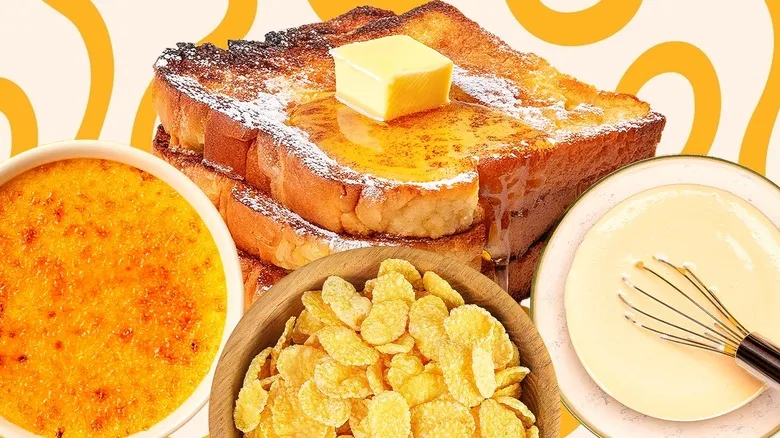1. Use dry/day old bread

The first step to elevating your French toast occurs even before you mix the batter or turn on the stove, and it revolves around the choice of bread. Renowned pastry chef Katherine Sprung suggests that older, drier bread is ideal for making French toast. This may seem counterintuitive at first, as stale bread isn't particularly appetizing on its own, but its dryness actually enhances the dish. Sprung explains that using fresh bread can lead to a mushy texture, which is not what we want. While a slightly soft, creamy center is desirable, the edges need to be crispy, and fresh or soggy bread struggles to achieve that balance. In contrast, dry bread has the perfect consistency to absorb the batter while still crisping up nicely.
This advice is particularly useful if you have some stale bread on hand that you want to repurpose instead of throwing away. However, if you don’t have any old bread available and are in the mood for French toast, you can dry fresh bread in the oven or toaster. Just be sure to set the heat to low and avoid over-toasting it, as you want the center to remain soft. A quick 10 minutes in the oven at 275°F should do the trick. If the bread becomes too toasted, it won’t effectively soak up the batter.
2. Make french toast with fluffy or flavored bread
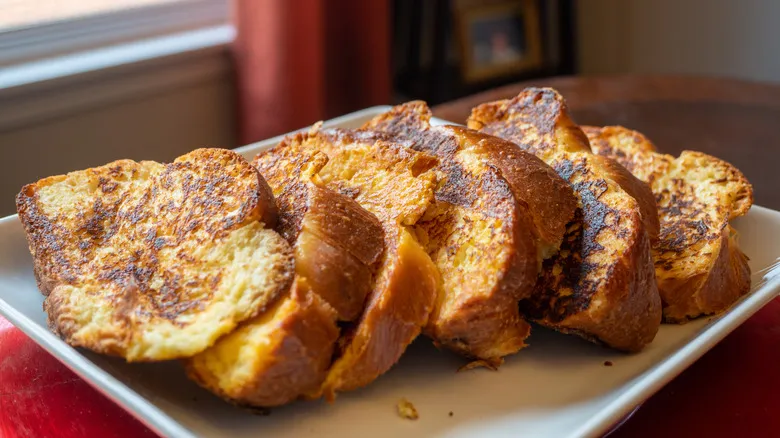
Besides opting for day-old or stale bread, the kind of bread you choose for your French toast can significantly impact the final result. While you can certainly use standard sliced white or wheat bread, one of the best ways to elevate your French toast is to start with a more flavorful bread. Fluffy breads are particularly advantageous as they absorb more delicious batter.
Award-winning pastry chef and founder of Squish Marshmallows, Katherine Sprung, shared that she prefers using challah or brioche for French toast because "they're fluffier and better at soaking up liquids." She explained that these breads act like sponges, soaking up plenty of batter. Other wonderfully fluffy bread options that create fantastic French toast include Hawaiian rolls or, if available, Japanese milk bread. Although they differ slightly from brioche and challah, they possess many similar qualities and have a subtly sweet flavor that complements French toast beautifully. In addition to fluffy breads, Sprung also suggests using breads with unique flavors baked in. For instance, cinnamon raisin bread can make for a delightful French toast.
3. Make french toast batter with a richer dairy product than milk
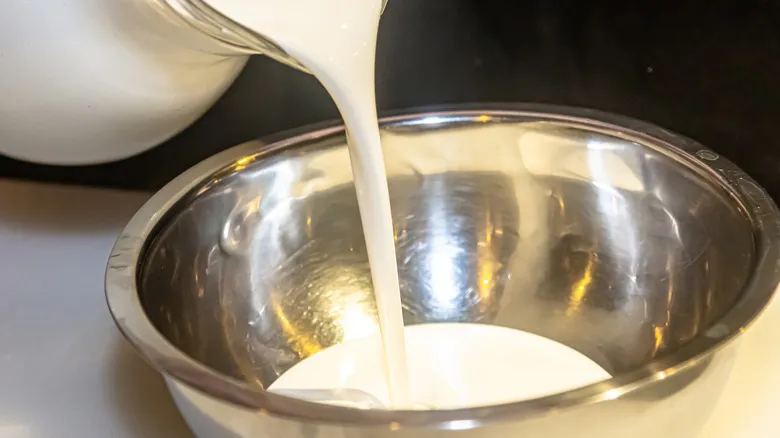
Once you've got your bread ready, it's time to focus on the batter. Typically, the batter for French toast consists of eggs, milk, and perhaps a few spices. However, opting for a richer type of dairy instead of regular milk can make a significant difference. Cynthia Christensen, the owner and recipe developer of the food blog "But First We Brunch," shared that this is one of her top tips for enhancing French toast.
Rather than using milk, Christensen prefers "a creamier dairy option like heavy cream, half-and-half, or even eggnog for a festive flair." Just like with other recipes, French toast gains a more luxurious, creamy flavor and texture when you choose a higher-fat dairy product. If you've ever enjoyed mac and cheese made with heavy cream and found it more delicious than the usual version, you understand what I mean. The increased fat content results in a rich, creamy flavor, and the same applies to French toast. Is it still fine to use milk? Absolutely! However, if you're looking to elevate your French toast experience, selecting a richer dairy product than milk will definitely enhance the dish.
4. Infuse the milk/cream with sweet or savory flavors
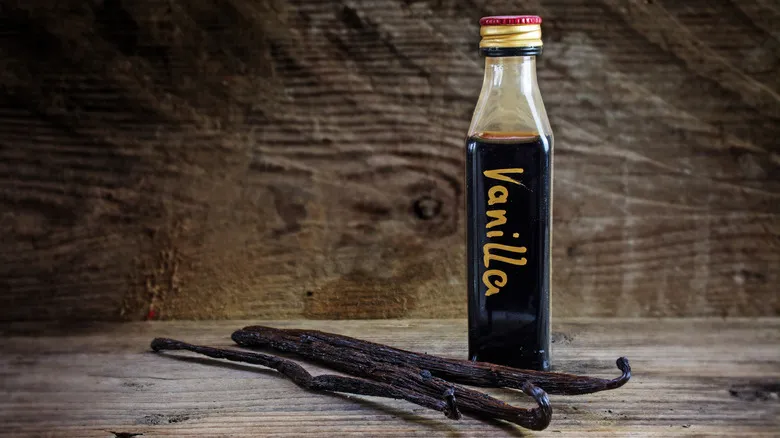
Are you ready for an exciting upgrade to the milk or cream you use for your French toast? Katherine Sprung, the creative mind behind Squish Marshmallows, suggests that infusing flavors into your chosen dairy before soaking your bread is an excellent way to elevate the taste. She points out that both sweet and savory options are effective, whether you prefer something straightforward like vanilla or something more intricate such as teas or herbs. "Just be sure to strain your milk before incorporating it into your custard base," advises Sprung.
Additionally, there are some wonderful flavorings that don’t require straining or letting your cream sit, unlike herbs, vanilla pods, or teas. For a quick flavor boost, you can easily blend in a bit of cold brew coffee, cocoa powder, or chocolate syrup into your milk or cream. Alternatively, consider adding a hint of pumpkin puree for a fall-themed French toast. While you’ll need to mix the batter thoroughly, the flavor will blend beautifully. Plus, pumpkin pairs wonderfully with butter, maple syrup, and whipped cream—everyone knows these are the ultimate companions for French toast!
5. Leave the bread to soak for a creamier texture and more flavor

Many of us tend to quickly dip both sides of our bread in batter before placing it in the frying pan, but this approach may not yield the best results. Award-winning pastry chef Katherine Sprung suggests allowing the bread to soak in the mixture for up to 10 minutes. She explains that a rapid dunking prevents the batter from fully penetrating the bread, which is essential for achieving that creamy texture in the center of perfect French toast. Soaking the bread also enhances the flavor of the infused milk, according to Sprung.
Most chefs agree with Sprung on the significance of soaking French toast bread for better texture. Renowned French chef Jacques Pépin echoes her advice, though he is a bit less specific about the soaking time, suggesting that a couple of minutes is sufficient. When you're pressed for time in the morning, it might be tempting to skip this slightly longer step. After all, you may have made French toast many times without adequately soaking the bread, but doing so will improve your dish. Take it from the experts: always allow your bread to rest in the batter for a few minutes before cooking, and you'll enjoy a wonderfully creamy center.
6. Fry french toast in a mix of oil and butter to prevent burning
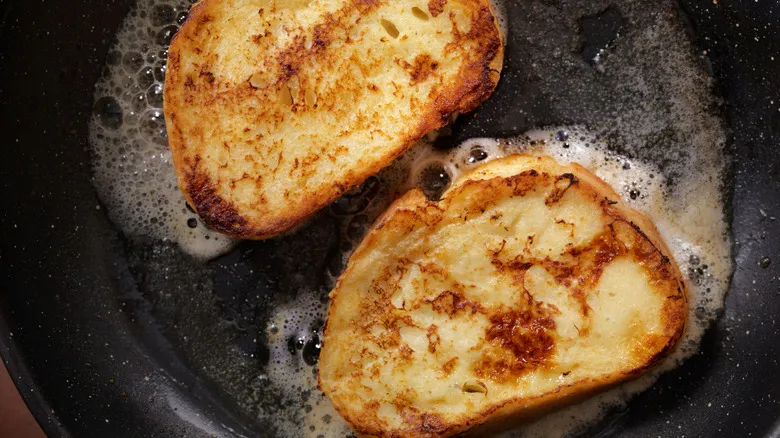
Opinions on whether to fry French toast in oil or butter vary widely among people. This debate can be quite divisive, with many expressing strong preferences for either option. However, award-winning pastry chef and founder of Squish Marshmallows, Katherine Sprung, has settled the matter in my mind by suggesting that using equal parts of both is not only the best approach but also a fantastic way to elevate your French toast.
Sprung explained that combining butter and oil ensures that the butter doesn’t burn too quickly, which often results in a messy pan and charred bread—something no one wants. Moreover, using equal amounts of both ingredients enhances the flavor of the French toast and allows it to achieve that desirable crispy, golden-brown crust. So why choose one over the other? Embrace the best of both worlds, as Sprung advises, and put the endless debate to rest.
7. Switch up the cooking method and make french toast in the oven or air fryer
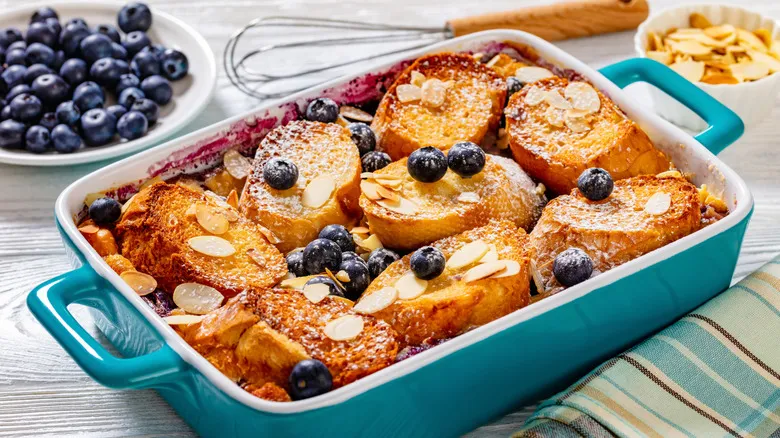
When it comes to preparing breakfast for a crowd, pan-frying French toast can be quite a challenge. But don’t fret! You can enhance your cooking experience by making crispy, effortless French toast in the oven.
Katherine Sprung, an award-winning pastry chef and the founder of Squish Marshmallows, is a huge advocate for baked French toast, especially when she wants to avoid the hassle of a frying pan or is cooking for larger groups. She explains that you can easily prepare a batch of bread and bake it all at once in a casserole dish or a large baking pan. However, she also notes, "You won’t achieve the same fried texture, but this method is incredibly efficient, particularly for big gatherings."
French toast is also one of those breakfast items that cooks wonderfully in an air fryer. While it may not be the best option for serving large groups, it excels at quickly and easily crisping the crust. Just be sure to line the bottom of your air fryer basket with parchment paper before cooking; otherwise, the batter may drip off before it has a chance to set and adhere to the bread.
8. Turn french toast into a savory dish for a fun twist
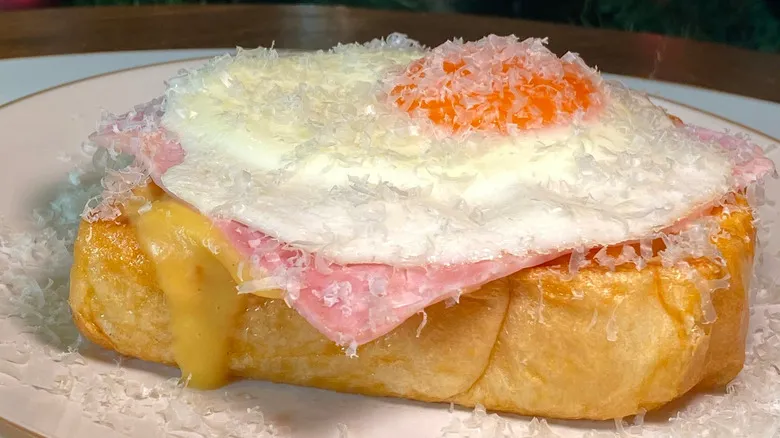
This upcoming upgrade takes French toast in a completely new direction, courtesy of award-winning pastry chef Katherine Sprung. She shared with me that while many people view French toast as a sweet dish, there's no reason it can't be transformed into a savory delight. Fascinating, right? She's absolutely correct. French toast is typically a staple of sweet breakfast options, but it doesn't have to remain that way. Additionally, turning it savory opens up the possibility of enjoying it for lunch or dinner.
Chef Sprung provided several tips for creating savory French toast effortlessly. First, she emphasized the importance of infusing the cream or milk with herbs. She also suggested "adding savory toppings like eggs, cheese, whipped cheeses, sautéed mushrooms, and onions," among others. Once you remove sweet toppings like maple syrup and whipped cream from the equation, the versatility of crispy, egg-soaked bread becomes apparent. Don’t overlook this upgrade. You don’t have to commit to savory French toast exclusively, but it’s definitely worth incorporating into your meal rotation.
9. Stuff french toast with delicious fillings
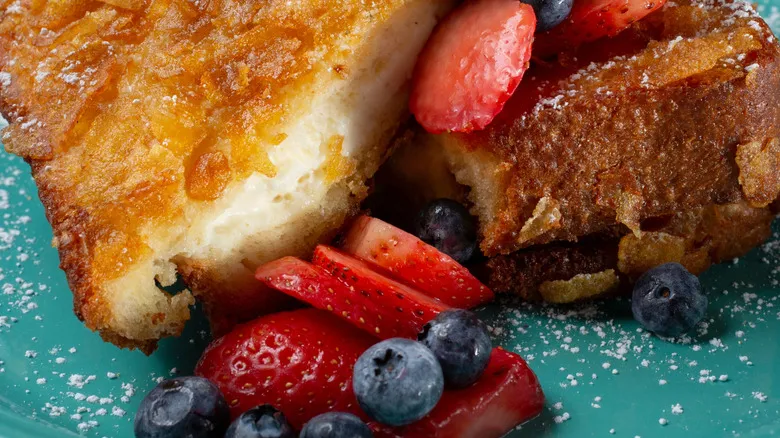
Toppings are a staple for French toast (I’m looking at you, butter, maple syrup, and whipped cream). However, you can elevate the flavor by filling your French toast with a variety of ingredients. Katherine Sprung, the founder of Squish Marshmallows, agrees. She mentioned, "You can go sweet or savory here." According to her, anything from cream cheese to chocolate hazelnut spread, jam, or fruit works wonderfully for stuffing French toast. Sprung also suggested that cheese is an excellent option, but that’s just the beginning—don’t hesitate to experiment with unique ingredients. You might discover a delicious new combination! At the very least, stuffing your French toast will enhance its flavor and texture.
I know we’re saying "stuff" your French toast, but really, it just means layering ingredients between slices, much like a sandwich (perhaps even a triple-decker). With this concept in mind, you could also whip up a makeshift Monte Cristo sandwich using French toast. For those unfamiliar, a Monte Cristo is a delightful fried ham and cheese sandwich dusted with powdered sugar (it’s often served with jam for dipping as well). The recipe is already so close to being made with French toast, so why not take it all the way?
10. Go wild with creative toppings
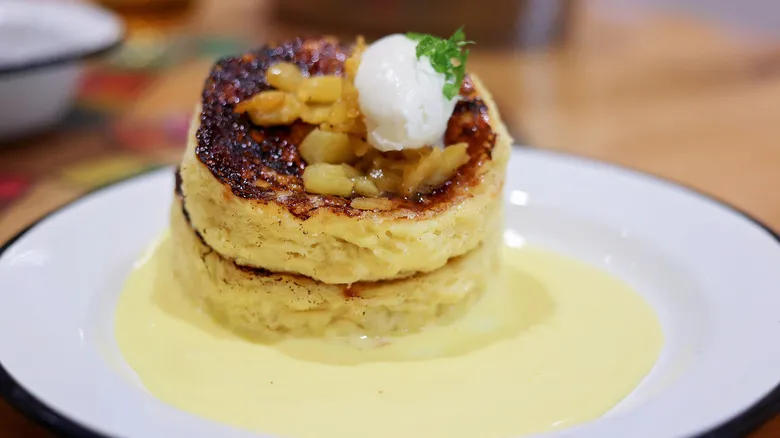
It would be quite a challenge to find someone who doesn't at least add butter to their French toast. Maple syrup is practically a must-have, and whipped cream is also a favorite. But the fun doesn't have to end there! Enhancing your French toast with toppings is not only a simple way to elevate the dish, but it also adds a burst of flavor to what is, let's be honest, a rather basic — dare I say — plain meal.
Award-winning pastry chef Katherine Sprung encourages getting inventive with French toast toppings. She mentioned, "You can really use anything, whether sweet or savory. If you have a brûlée torch, you can even create a crème brûlée French toast." Impressive! While not everyone has a torch in their kitchen, this might just be the perfect excuse to invest in one.
Cynthia Christensen, pastry chef and the owner/recipe developer of the food blog "But First We Brunch," also believes that toppings are a wonderful way to enhance French toast: "I enjoy caramelizing bananas with a splash of rum for bananas foster French toast. I also like to sauté fruits like peaches or apples with brown butter and brown sugar, then spoon that over the finished French toast." Are you feeling hungry yet?
11. Make a drool-worthy coating with crushed cereal
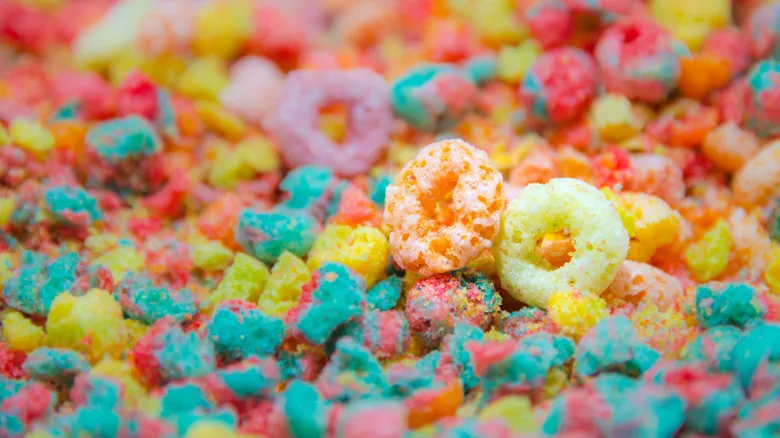
Enhancing your French toast with delicious toppings or fillings can elevate it from mundane to gourmet, but this next twist will make you feel like you’re indulging in a dish from the trendiest brunch spot. Award-winning pastry chef and founder of Squish Marshmallows, Katherine Sprung, suggests coating your French toast with your favorite breakfast cereal before frying it.
Using cereal adds a delightful crunch and, depending on your choice, introduces unique flavors as well. Sprung recommends cereals like cornflakes, Fruity or Chocolate Pebbles, Frosted Flakes, or any crispy variety as excellent options. Before we jump in, let’s clarify the steps. "Once your bread has soaked, spread crushed cereal on a plate and coat each slice of bread in the cereal before placing it in the pan to fry," Sprung advises. After that, it’s business as usual. Sounds simple, right? The results are fantastic, too. A cereal coating ensures a wonderfully crunchy exterior, and just imagine the flavor possibilities!
12. Make a french toast board for groups and special occasions
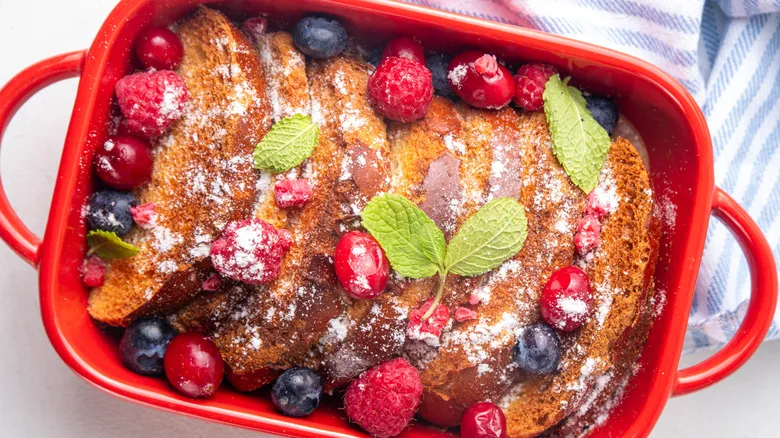
Another enjoyable way to prepare French toast for a crowd focuses on the presentation rather than the cooking method — and trust me, it’s a real crowd-pleaser. Cynthia Christensen, a pastry chef and the creator behind the food blog "But First We Brunch," shared, "For special occasions like the holidays, I love to create a French toast board." She uses thick slices of brioche to craft indulgent French toast, which she then cuts into triangles. These are beautifully arranged in the center of the board, surrounded by small bowls filled with a variety of toppings, such as fruits, syrups, and more. She appreciates this style of serving because "everyone can help themselves and customize their French toast to their liking." Even the fussiest eaters can’t resist that.
If you want to give your guests a little inspiration or a head start, consider enhancing Christensen's board by adding some toppings, like berries and powdered sugar, to the stack of French toast wedges. However, it’s best to keep the syrup on the side. If you pour it over the top too soon, the bread may become soggy before everyone has a chance to load their plates and savor the dish.
13. Use melted ice cream as french toast batter to save time and enhance flavor
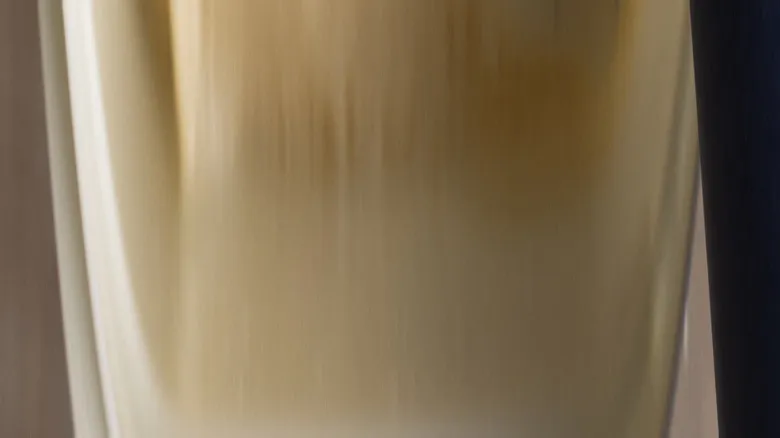
This final enhancement comes from the renowned celebrity chef Jacques Pépin, and it’s not only scrumptious but also a time-saving trick. Rather than relying on a conventional batter, Chef Pépin opts for melted vanilla ice cream to create what he refers to as "french toast the easy way." In one of his numerous cooking videos, he shares that he began making ice cream french toast back in the 1950s while working at Hôtel Plaza Athénée in Paris. As a busy breakfast chef, he prioritized efficiency and discovered that melted ice cream was an excellent way to streamline his kitchen work.
It's worth mentioning that Chef Pépin prefers French ice cream due to its high egg content. While it may seem indulgent, it contains eggs and cream, much like a traditional french toast batter. He also notes that while vanilla is the classic choice, you can experiment with melted strawberry or chocolate ice cream for a delightful variation. For a final touch, Chef Pépin serves his cooked french toast with the leftover melted ice cream, allowing it to absorb every last bit of creamy richness. Yes, please!
Recommended

The Affordable Canned Way To Enjoy A Poke Bowl On A Budget
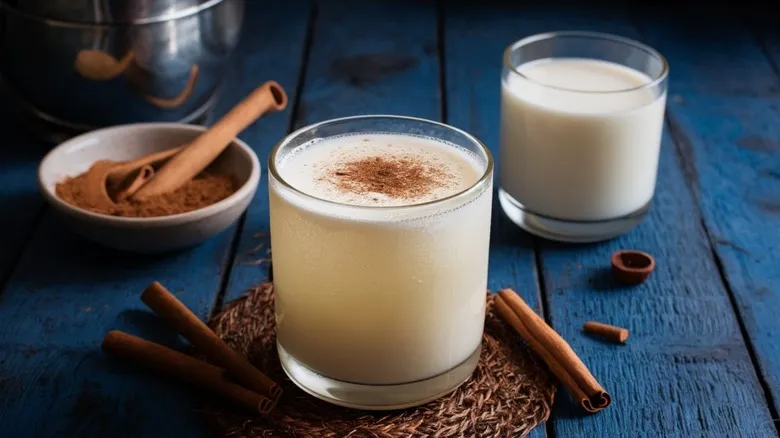
For Stronger And Creamier Homemade Horchata, Try A More Flavorful Rice

Chef Wolfgang Puck's Tip For Becoming A Better Cook Is So Simple
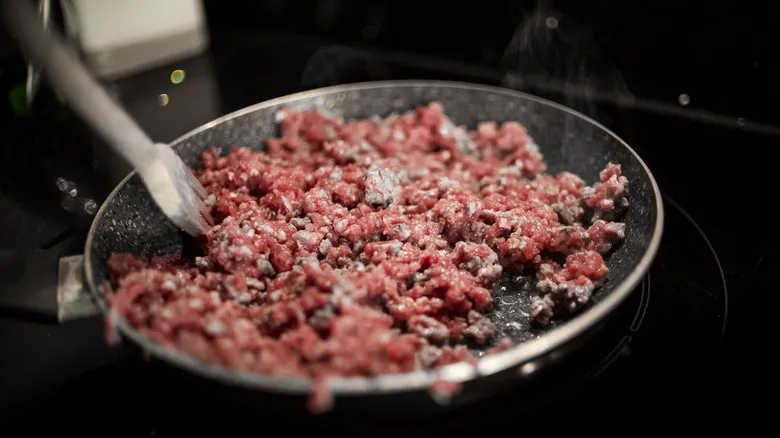
The Practical Way To Use Your Grease From Cooked Ground Beef
Next up

